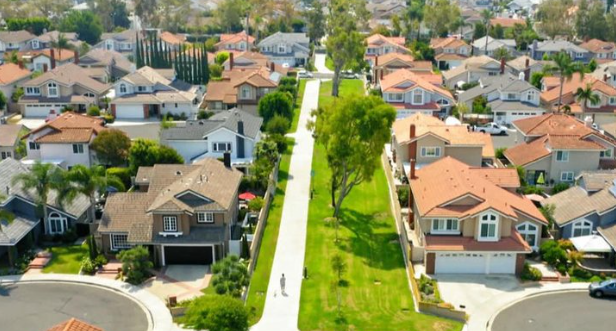People all over America are dropping their homeowners insurance policies as costs skyrocket.
In 2019, Anjali Tierra, a retired high school teacher, decided to drop her homeowners insurance after the monthly cost soared from under $100 to $350. Living off a $3,500 monthly pension and situated in the high fire risk Tehachapi Mountains of Southern California, Tierra found the new premium unsustainable. Despite her efforts, she has been unable to secure affordable insurance since, joining a growing trend of Americans going without homeowners insurance. This all according to USA Today
A study by the Insurance Information Institute reveals that 12% of Americans now lack home insurance, a significant rise from 5% in 2019. This increase is attributed to a sharp rise in insurance costs, driven by higher catastrophe losses, inflation, and supply chain issues affecting repair costs. Insurers are reportedly paying out $1.10 for every $1 collected in premiums.
Millions of Americans face rising homeowners insurance rates as natural disasters linked to climate change increase costs for insurers. https://t.co/nwX0nZykNe
— CBS News (@CBSNews) June 15, 2024
While mortgage lenders require homeowners insurance, approximately 40% of Americans who own their homes outright view insurance as optional. However, experts warn that forgoing insurance is risky, especially given predictions of increased severe weather due to climate change. The National Oceanic and Atmospheric Administration recorded a record 28 billion-dollar disaster events last year alone.
BIDENOMICS: “Inflation has pushed homeowners insurance rates up 11% this year alone.”
Baden is depriving Americans of their own homes. At the same time, he spends billions to provide free housing, food, and medical care to migrants.#Bidenomics #Inflation #Biden pic.twitter.com/G0bfgLaQs1— Across The Line (@AcrossTheLine11) June 12, 2024
The rising costs are particularly burdensome for lower-income homeowners and homeowners of color, who are disproportionately uninsured. These groups face a greater risk of losing their homes or significant net worth due to severe weather events. For instance, James Mercadal, a New Orleans resident, faced $38,000 in repairs after Hurricane Ida but couldn’t afford insurance on a $900 monthly income.
Insurance premiums have become prohibitively expensive for many, with quotes reaching as high as $40,000. This crisis is pushing more people to “self-insure” by setting aside funds for potential losses, or to rely on mitigation efforts like fireproofing homes. Yet, such measures do not replace the comprehensive coverage offered by insurance.
How to lower your cost as inflation impacts insurance #Finance #AmericanEntrepreneur #BusinessNews #Entrepreneur [Video] From cars to homes, for many Americans, one cost that is still increasing is insurance. Inflation has pushed homeowners insurance… https://t.co/WNwjKkHNMP
— Jenna Linden (@JennaLUSA) June 12, 2024
Key Points:
i. Anjali Tierra, a retired teacher, dropped her homeowners insurance in 2019 after the premium increased from under $100 to $350 per month, and she has been unable to find affordable coverage since.
ii. The rate of uninsured homeowners in the U.S. has risen sharply, with 12% of Americans now without home insurance, up from 5% in 2019, driven by escalating coverage costs and catastrophe losses.
iii. Insurers are struggling with financial sustainability, as evidenced by them paying out $1.10 for every $1 received in premiums, compounded by inflation and supply chain disruptions.
iv. Lower-income and minority homeowners are disproportionately affected by the lack of insurance, facing higher risks of financial devastation from severe weather events.
v. Experts suggest mitigating high insurance costs by bundling policies, increasing deductibles, and shopping around, but the affordability crisis remains a significant challenge.
Al Santana – Reprinted with permission of Whatfinger News



